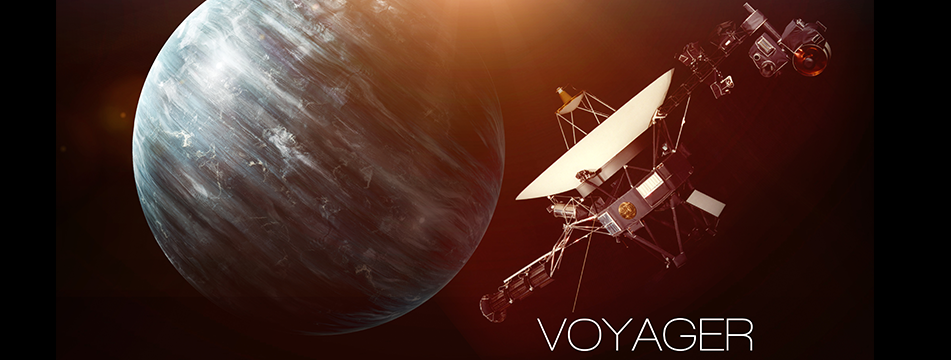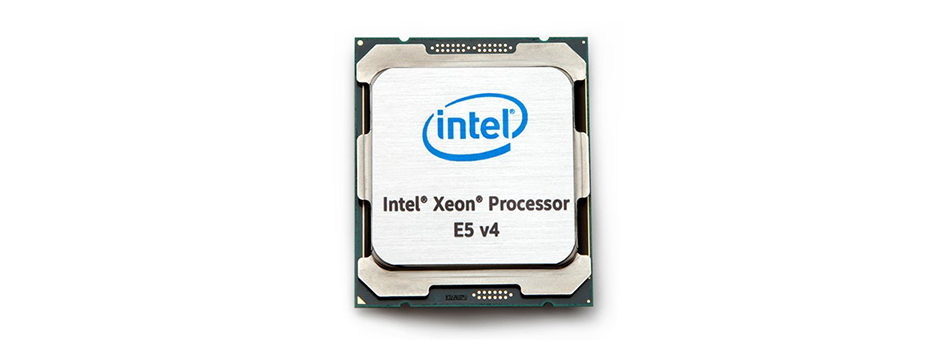The Voyager space probes, launched with cutting edge technology in 1977, still continue their journey today despite using components and technology from 40 years ago. It is the robustness and thoughtful system design that has allowed the mission to be so successful. Technology is evolving rapidly and comparing the computer and system specifications of what went into the Voyager to what we use today shows not only how far technology has improved but also reiterates how much can be achieved when hardware is tailored and designed toward specific criteria.

One of the Voyager Space Probes
The primary mission of the Voyager was originally to study the planetary systems of Jupiter and Saturn. Comprised of two probes, Voyager 1 & 2, the successful completion of these primary goals led to extending the mission. This included the exploration of Uranus and Neptune and then onwards travel to the outer reaches of our solar system and beyond, eventually reaching interstellar space. The probes are expected to provide scientific data until 2025, some 48 years after launch. After this time there will be no power supply left for any of the scientific instruments. They will then continue onwards for tens of thousands of years, with NASA believing they are forever destined to wander the milky way.

Ground Control
What is fascinating about these space probes is the technology used compared to what we have today. Both space probes use three computers for its myriad of systems and functionality. There is the Computer Command System (CCS) which is used to carry out instructions from the ground and to respond to any malfunction alerts. The second system is the Flight Data System which controls the operation of the scientific instruments including collecting and formatting the data ready for transmission. Finally, the Attitude and Articulation Control System, receiving commands from the CCS, facilitates spacecraft manoeuvers and scan platform movement.
Just like the server solutions we create here at Boston, each of these Voyager probes have redundancy as there are actually two of each computer. Having redundancy means if one system was to go down the other could take over to keep the probe online until it can be repaired. This is a key practise for server solutions today as it makes services and resources highly available in the event of hardware failure.
Redundancy in the Voyager space probes came in the form of dual systems, servers today also have this type of replica backup but it has evolved a lot further. At Boston we can tailor solutions with redundancy down to the component level. For example, most of our servers have some form of component redundancy. This is sometimes referred to as N+1 where you have the required hardware component plus one extra for redundancy. These typically include power supplies, hard drives in a RAID configuration, network ports, and also complete infrastructure duplicates.
Beyond that, scalable high availability clustered servers have nodes that are designed to make sure services stay online in the event of entire server, rack or site failure conditions. An entire data centre's functionality can even be replicated elsewhere to ensure continuous operation in the event of a natural disaster in a particular location.
Since the probes launch, so many years ago, we have come on leaps and bounds in processor technology too. However, it does show how well the spacecraft CPU's were designed for their mission specific tasks given how effective they have been in their 40-year journey thus far.
For example, the voyager systems master clock runs at 4MHz but in fact the CPU clock is only 250 KHz. A typical instruction takes 80 microseconds, that is about 8,000 instructions per second. To put this in perspective, a typical smartphone today such as the iPhone 6 can complete around 3.36 billion instructions per second.
Even further, comparing them to server systems, modern CPU's are an order of magnitude faster and have vastly higher clock speeds and multiple CPU cores. The recently launched 'Broadwell-EP' server grade E5-2600 V4 series from Intel have CPU base speeds ranging from 1.6 GHz to 3.5 GHz - that's almost a thousand times faster.
At Boston some of our solutions even use overclocked CPU's running at an even higher 4.6 GHz which offer tremendous performance for latency specific applications.
In comparison, the voyager CPU at 250 kHz is equivalent to just 0.00025 GHz.

The latest cutting edge Intel 'Broadwell-EP' CPU range
This puts into perspective how far technology has advanced in computer systems over the last 40 years or so. Even simple everyday technologies can vastly outperform the same system used in the voyager space probes. It's a little strange to think, but that small smartphone in your pocket could easily power a mission to outer space and beyond. Here's to the next 40 years...